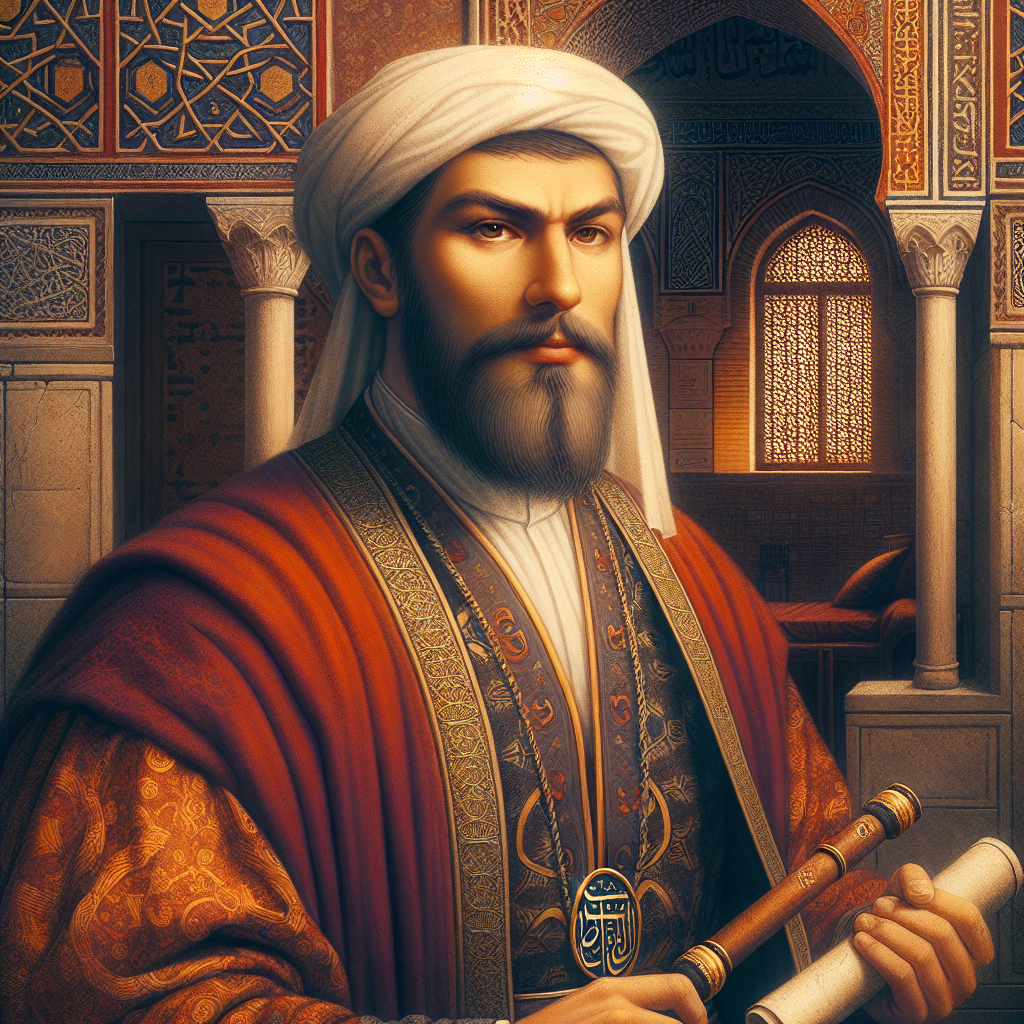.
The life and death of Sultan Mehmed II, often remembered as Mehmed the Conqueror, represents a pivotal chapter in the annals of Ottoman history. Known for his audacious conquest of Constantinople and the enormous impact he had on expanding the Ottoman Empire, Mehmed II’s passing marked the end of an era brimming with transformation and ambition. This blog post unravels the narrative of his death and its aftermath, offering students an engaging glimpse into one of history’s most compelling figures.
Mehmed II A Transformative Leader
Sultan Mehmed II’s leadership was marked by fearlessness and vision. His capture of Constantinople in 1453 stands as a landmark achievement that reverberated through history. This conquest not only signified the fall of the Byzantine Empire but also transformed Constantinople into Istanbul, the vibrant heart of the Ottoman Empire. Beyond his military prowess, Mehmed II was a patron of the arts and sciences, fostering a rich cultural renaissance within the empire. His reign was characterized by large territorial expansions, innovative governance, and a strong central authority that set the stage for the empire’s future dominance.
The Sultan’s Sunset The Passing of Mehmed II and Its Ripple Through History
Under Mehmed’s rule, the Ottoman Empire stretched its wings, assimilating diverse cultures and establishing itself as a formidable power in Europe and Asia. The Sultan’s ambition saw the empire’s borders expand significantly, bringing prosperity and challenges. His impact continued to be felt long after his death, influencing the strategies and policies of subsequent rulers who sought to emulate his success. Mehmed II’s multifaceted legacy makes him a subject of enduring fascination for historians, students, and scholars alike.

Health Decline and Final Years
The final years of Sultan Mehmed II were overshadowed by declining health, which inevitably affected his capacity to govern. Chronic health issues plagued the Sultan, diminishing his vigor and rendering him less capable of handling the empire’s expansive needs. These health challenges hindered his ability to lead military campaigns personally, leaving much of the administrative work to trusted officials. Despite his ailments, Mehmed II remained determined to pursue his ambitions, though the pressures of leadership took a visible toll on him.
The Sultan’s declining health meant that critical decisions were often left in the hands of his advisors, creating an environment ripe for political maneuvering. His personal struggles were compounded by the weight of maintaining control over a vast empire, managing internal affairs, and dealing with external threats. Mehmed’s later years were marked by a relentless pursuit of stability, striving to consolidate his conquests and leave a robust empire for his successors despite his physical limitations.
During this time, Mehmed II faced numerous pressures internally and externally. His health concerns, combined with the stress of leadership, created a challenging atmosphere as he sought to secure his empire’s future. These personal battles shaped the final years of his reign, adding a layer of complexity to the legacy he would leave behind.
Political Landscape Before His Death
In the years leading to Mehmed II’s death, the Ottoman Empire was a burgeoning power, steadily expanding its territory and influence. The political landscape was dynamic, marked by strategic alliances and ongoing conflicts with European powers. Sultan Mehmed’s expansionist policies significantly increased the empire’s size and prestige, yet they also led to new challenges in governance and stability.
Within the empire, key political figures and factions vied for power and influence, each seeking to shape the future direction of the state. These internal dynamics were further complicated by the external threats posed by rival European entities, who viewed the Ottomans’ growing power with apprehension. Mehmed’s ability to maintain stability amidst these pressures was a testament to his leadership, though it also strained his resources and health.
Despite these challenges, Mehmed II remained resolute in his commitment to strengthen and expand the empire. His efforts to consolidate power and address internal and external threats were integral to maintaining the Ottoman Empire’s status as a dominant force. However, the political tensions of this period also foreshadowed the difficulties that would arise following his death, highlighting the precarious balance of power both within and outside the empire.
Succession Planning
Succession was a critical consideration for Sultan Mehmed II as he contemplated the future of his empire. With multiple heirs vying for power, the question of succession was fraught with tension and uncertainty. Mehmed’s sons—Mustafa, Cem, and Bayezid—each played a role in preparing for leadership, though the path to succession was often unclear and contested.
Mehmed II’s approach to succession was pragmatic, seeking to ensure that the empire would remain stable and continue to thrive under his chosen successor. However, the potential for conflict among his heirs was a constant concern, as each son sought to assert his claim to the throne. The tensions among the potential heirs were emblematic of broader challenges related to governance and continuity, raising questions about the future direction of the empire.
Despite Mehmed’s efforts to plan for a smooth transition, the issue of succession remained a contentious one, with significant implications for the empire’s stability. The anticipation of these power struggles underscored the delicate balance of power and governance that Mehmed sought to maintain during his reign.
Death of Sultan Mehmed II
The death of Sultan Mehmed II on May 3, 1481, marked a profound turning point in Ottoman history. Circumstances surrounding his passing were shrouded in mystery and speculation, reflecting the intrigue and complexity that characterized his reign. With his death, the empire lost a formidable leader whose vision and ambition had reshaped its destiny.
The immediate reaction to Mehmed’s death was one of shock and uncertainty, as court officials, military leaders, and the public grappled with the loss of a ruler whose influence had been so deeply felt. The historical significance of his death lay not only in the end of his transformational leadership but also in the challenges it posed for the empire’s future trajectory. Mehmed II’s passing left a void in leadership, prompting questions about the continuity of his policies and the stability of the empire he had painstakingly built.
His death initiated a period of reflection and transition, as those left behind sought to honor his legacy while navigating the complexities of succession and governance. The impact of Mehmed’s death was far-reaching, influencing the direction of the Ottoman Empire for generations to come.
The Funeral and Mourning Period
Following Mehmed II’s death, elaborate funeral arrangements and ceremonies were held to honor his memory and contributions. These events were marked by a profound sense of loss and reverence, capturing the gravity of the moment and the profound impact Mehmed had on the empire and its people. The mourning period was a reflection of the deep respect and admiration he garnered throughout his reign.
Public expressions of grief revealed the extent to which Mehmed II’s leadership resonated with the populace, as citizens from all walks of life participated in commemorating his legacy. The impact of his death on the populace was palpable, with many viewing his passing as the end of a significant era in Ottoman history. Mourning practices emphasized the enduring imprint Mehmed left on the empire, highlighting his role as a pivotal figure in shaping its identity and future.
The mourning period was also a time of reflection, as those who had followed Mehmed’s leadership contemplated his achievements and the challenges that lay ahead. The elaborate ceremonies not only honored his memory but also underscored the lasting influence he would continue to have on the empire and its subsequent rulers.
Aftermath Power Struggles and Succession
The aftermath of Mehmed II’s death was characterized by intense power struggles as various factions and potential heirs vied for control of the empire. The succession crisis was marked by intrigue and competition, with key figures seeking to assert their dominance and influence over the future direction of the state. The role of Mehmed’s sons, particularly Bayezid, was central to this power struggle, as each sought to secure their place in the empire’s leadership.
The eventual ascension of Bayezid II to the throne was not without its challenges, as he faced significant opposition and obstacles in consolidating power. The transition of leadership was fraught with tension and uncertainty, underscoring the complexity of succession in a rapidly evolving empire. Bayezid’s capacity to overcome these challenges was pivotal in determining the empire’s trajectory in the wake of Mehmed’s passing.
The power struggles that ensued following Mehmed II’s death had lasting implications for the Ottoman Empire, setting the stage for future conflicts and governance challenges. The resolution of these struggles would prove critical in shaping the empire’s future course and ensuring the continuity of Mehmed’s legacy.
Impact on the Ottoman Empire
The death of Sultan Mehmed II marked the conclusion of a transformative era in Ottoman history, leaving behind a legacy of expansion, innovation, and cultural renaissance. With his passing, the empire faced new challenges in maintaining the momentum of territorial expansion and consolidating power. The transition to Bayezid II’s leadership brought a shift in policies and priorities, as he sought to sustain Mehmed’s achievements while addressing emerging internal and external pressures.
Bayezid II’s reign was characterized by efforts to continue Mehmed’s policies and territorial ambitions, though the challenges he faced were formidable. Balancing the demands of governance, diplomacy, and expansion required careful navigation, as the empire confronted new opportunities and threats. The long-term consequences of Mehmed II’s death were felt across various domains, influencing the empire’s expansion, stability, and cultural development.
Despite these challenges, the legacy of Mehmed II endured, serving as a foundation for the empire’s continued growth and evolution. His contributions to the Ottoman identity, culture, and governance provided a blueprint for future rulers, ensuring that his influence would persist for generations to come.
Mehmed II’s Legacy
Sultan Mehmed II’s legacy is one of monumental achievements and enduring influence, reflecting his pivotal role in shaping the Ottoman Empire’s trajectory. His contributions extended beyond territorial expansion, encompassing cultural, administrative, and military advancements that left a lasting impact on the empire. Mehmed’s vision and accomplishments set the stage for subsequent rulers, providing a framework for governance and development that would guide the empire’s future.
His role in shaping Ottoman identity and culture is evidenced by the artistic, architectural, and intellectual achievements that flourished under his reign. Mehmed’s support for the arts and sciences fostered a rich cultural renaissance, enhancing the empire’s prestige and fostering a sense of unity and identity. His governance innovations, including centralized administration and legal reforms, strengthened the empire’s institutions and provided a model for effective leadership.
The enduring legacy of Mehmed II is reflected in the continued fascination with his character and accomplishments, both within and outside the Ottoman Empire. His influence extended beyond his lifetime, shaping the empire’s future and leaving an indelible mark on history.
Cultural Reflections on Mehmed II
The impact of Sultan Mehmed II extends beyond historical records, permeating literature, art, and popular culture. His character and accomplishments have been celebrated and reimagined in various cultural reflections, highlighting the enduring fascination with his life and legacy. Artistic depictions and literary works have captured the essence of Mehmed’s reign, offering diverse perspectives on his leadership and influence.
The representation of Mehmed II in popular culture serves as a testament to his significance in Turkish history and his continued relevance in contemporary discourse. Through films, novels, and other media, audiences have been captivated by his story, exploring the complexities of his character and reign. These cultural reflections provide valuable insights into the broader impact of Mehmed II, illustrating the ways in which his legacy has been interpreted and celebrated over time.
Historians and scholars have also contributed to the ongoing analysis of Mehmed’s reign, offering nuanced perspectives on his leadership and achievements. The study of Mehmed II in the context of Ottoman history underscores the multifaceted nature of his legacy, highlighting both his accomplishments and the challenges he faced. This scholarly discourse enriches our understanding of Mehmed’s impact, providing a comprehensive view of his contributions to the empire and the world.
Conclusion
The death of Sultan Mehmed II marked the end of a transformative era in Ottoman history, leaving behind a legacy of expansion, cultural renaissance, and innovative governance. His contributions to the empire were profound and far-reaching, influencing subsequent rulers and shaping the trajectory of the Ottoman Empire for generations. Mehmed’s vision and accomplishments have continued to resonate through history, providing valuable lessons and insights for scholars, students, and enthusiasts alike.
The significance of Mehmed II’s death lies not only in the challenges it posed for the empire’s continuity and stability but also in the enduring impact of his leadership and legacy. His reign serves as a testament to the power of visionary leadership, illustrating the ways in which ambition, innovation, and determination can shape the course of history. For students exploring the complexities of Ottoman history, the story of Mehmed II offers a captivating and instructive narrative, inviting further exploration and reflection.
As we consider the legacy of Sultan Mehmed II, we are reminded of the importance of visionary leadership and the enduring impact of those who seek to transform their world. His story continues to inspire and captivate, offering valuable insights into the challenges and opportunities of leadership, governance, and cultural development.









